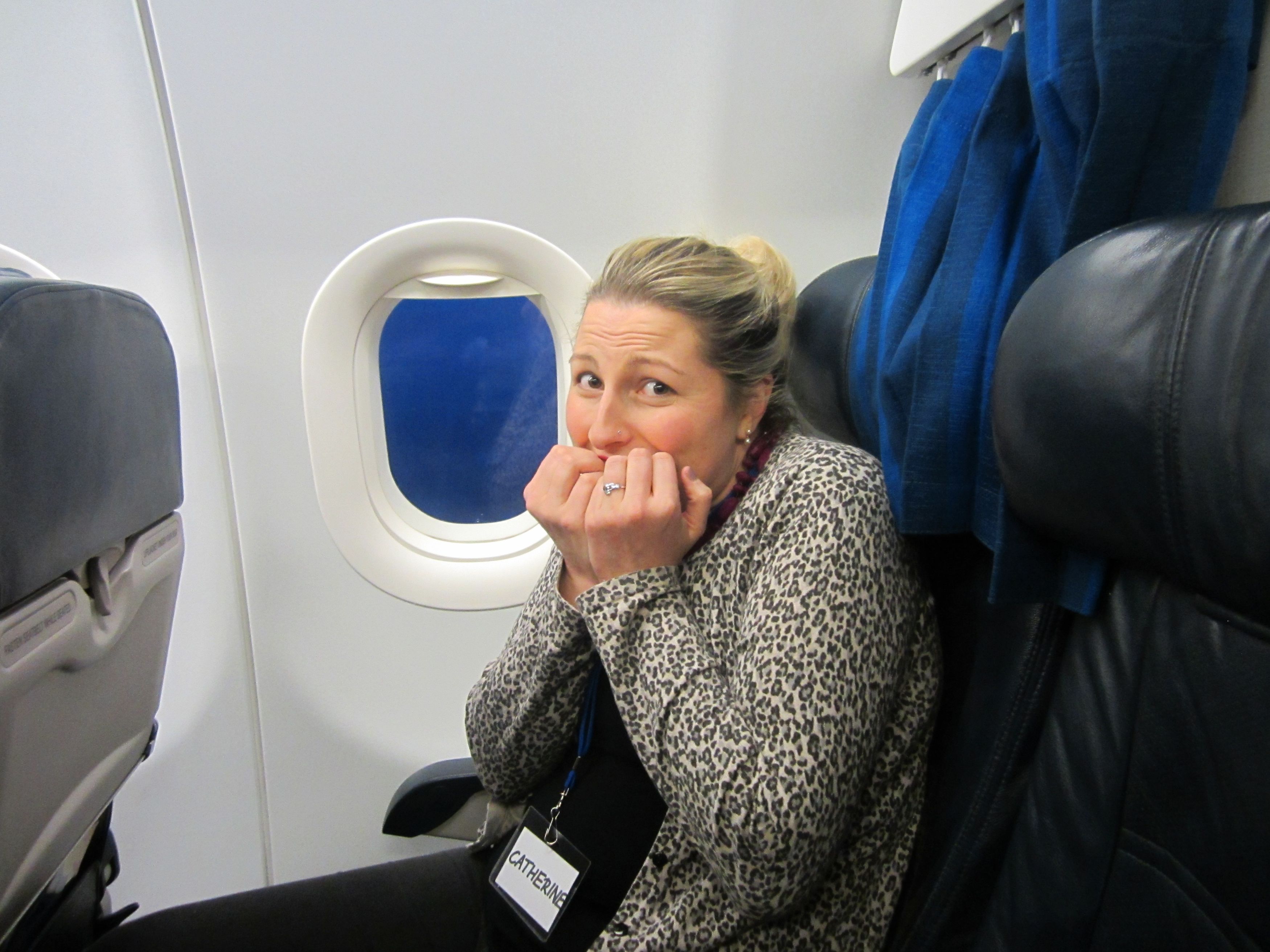I believe I can fly
One in four people have a fear of flying, making holidays hellish before you’ve even arrived. This year, Catherine Wylie checks in early – for BA’s Flying With Confidence course
“Breathe and squeeze,” the captain says, as we taxi towards the runway. “Everything’s normal. Just another day in the office for us up here!”
Armrests are gripped and hearts race as the plane thunders along, before beginning its bumpy climb into the skies over Heathrow.
A cabin crew member leaps into action to help a woman two seats in front of me, who’s crying uncontrollably. But the pilot continues to reassure us that the turbulence we’re experiencing is perfectly natural, everything’s fine, and that, in case we were in any doubt that he was not totally relaxed, he had just casually binned his chewing gum.
‘OK’, I think to myself, ‘so the bumps aren’t pleasant, but it’s normal, everything’s fine’.
And I realise that I, too, am remarkably relaxed. Usually, flying’s a terrifying experience for me – not terrifying enough to stop me taking to the skies altogether, but it certainly ranked as a big source of anxiety.
My brain would go into overdrive at the boarding gate… Are the engineers checking everything properly? The crew weren’t out on the beers last night, were they? I’d get onto the plane, fasten my seatbelt immediately, then wait until we were cruising at full height before actually putting my weight on the seat (planes are already heavy – how on earth do they take off?).
I’d constantly monitor the cabin crew’s body language and facial expressions for signs of impending disaster, all the while imagining my face on the front page of newspapers, convinced that this is it – I’m minutes away from being part of tomorrow’s main news story.
If only every flight I’d been on had featured such a comforting captain, it would have saved the wrists and – on more awkward occasions – the thighs of the people unlucky enough to have been seated next to me.
This is no ordinary flight, though. It’s the final stage of British Airway’s (BA’s) Flying With Confidence course.
It turns out I’m not alone in my scepticism about a 390-tonne Jumbo Jet flying across the Atlantic at 35,000ft – the course has been running for 25 years and there are around 120 of us here today, a mixture of ages from all walks of life.
In a conference room, a safe distance from Terminal 5, a large chunk of the course revolves around explaining exactly how planes manage to stay in the air, with talks by two BA captains.
We’re also told about Air Traffic Control – one of my big worries. But it turns out, they’re a pretty well organised set-up, run by people who know what they’re doing, and it really isn’t very likely that planes will bump into anything.
A psychologist speaks to us too, and there’s a real atmosphere of ‘we’re all in this together’ – similar to what I imagine rehab is like.
Ours is a common phobia, we’re told. One in four people have a fear of flying, so it’s perhaps ironic that just 16% of people are phobic of death. A whopping 39% are terrified of snakes, making the slithery reptile the most common phobia (feel free to insert Snakes On A Plane jokes here).
The good news (depending on who you are) is that last year, more people died putting a knife into a toaster in the UK, than globally on an aircraft.
In fact, did you know, that every second of every day, there are one million people airborne around the world?
The statistics are reassuring, but when you have a phobia, you convince yourself that your plane is one of the doomed ones, even if the odds deem it massively unlikely.
My own phobia really took off following the 2009 Air France disaster, when a plane from Rio de Janeiro bound for Paris went missing over the Atlantic, killing everyone on board.
That summer, I was travelling alone to Buenos Aires with Air France to meet my boyfriend. I knew I’d be flying on a similar flight path, through the Intertropical Convergence Zone, at night, and I believed I was next. I didn’t even know what the Intertopical Convergence Zone was, but I’d heard it mentioned in news reports and it sounded scary.
Now, sitting in BA’s conference room, I realise that such a lack of understanding is one of the things that unites everyone on the course. As the psychologist points out, that leads us to “catastrophise” and see disaster in high definition.
To combat this, we’re taught that ‘breathe and squeeze’ technique (breathing deeply and calmly and clenching your buttocks!), and to re-run disastrous scenarios through our minds with happy endings, as opposed to repeated negativity and tragedy.
Boarding the plane at the end of the day, it’s time to put it to the test.
Despite those lady’s tears at take-off, once we’re up in the air, it’s quite incredible to see the difference in many of my fellow phobics.
As we fly over London, the bright lights of the capital twinkling, the captain tells us about how much he loves his job and that the clear view of the city below us is, “quite simply a privilege”. Soon, it’s time to land. But that’s OK. That ‘weird’ scraping noise? Probably nothing. That ‘sinister’ sounding beep? Someone just wants sugar for their tea.
The captain compliments his co-pilots on their smooth landing and, a fitting end to a surreal day, us passengers hold hands to celebrate our accomplishment.
One young Irishman explains that he’d embarked on a 12-hour journey, travelling by boat and by road, in order to complete the course and, while he found the flight terrifying, he’s delighted at what he’s achieved. He was embarrassed about his fear and the only person who knew he’d signed up was his mother. There’ll be no ferry home tomorrow; he’s catching a flight.
Another man had been sent on the course by his employers, who said he had to get over his fear if he wanted to progress in his job. After suffering panic attacks all day, he was one of the calmest on the plane – he will now be taking regular flights to India and the United States.
As for me, I’m amazed to say it, but I’m not imagining my face splashed across the newspapers any more; and I’m thrilled.
Just breathe and squeeze.
:: The British Airways Flying With Confidence course takes place in Heathrow, Gatwick, Edinburgh and Dubai and costs from £275 (Premium and one-to-one courses are also available). For information, visit flyingwithconfidence.com or call 01252 793 250
Latest posts by Sally - Silversurfer's Editor (see all)
- 10 tips to make perfect sausage rolls at home - December 3, 2024
- Time to make your opinions count! - December 3, 2024
- Dairy Diary Tear & Share Mincemeat Swirls - December 1, 2024
- Win ONE of THREE signed copies of David Hamilton’s Long and Winding Road - December 1, 2024
- Win a CleverChef 14 in 1 Multi-Function Cooker by Drew&Cole - December 1, 2024






















